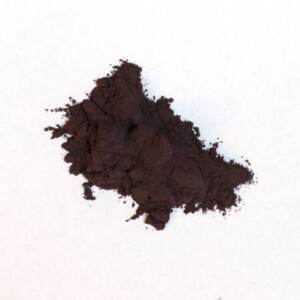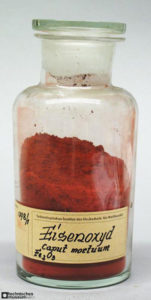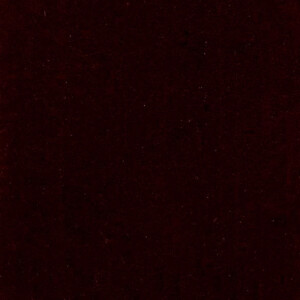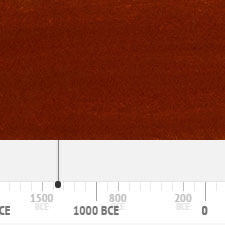Caput Mortuum
Inorganic pigmentComposition and Properties of Caput Mortuum
Caput mortuum is either a relatively modern synthetically prepared iron(III)-oxide, but the name has also been used for natural hematite-containing material treated with heat which was found in antique and medieval paintings. The color can vary from dark brown to black-violet depending mainly on particle size.
Iron oxides are stable at high temperatures but not resistant against acids, it is, however, absolutely lightfast.
Video: 'Venetian Red, Indian Red & Caput Mortuum' by In Liquid Color
Names
Alternative names
Venetian red, colcothar, Spanish brown, Falun red, burnt vitriol
Color Index
PR 101
Word origin
From Latin caput mortuum meaning death’s head. The name goes back to the alchemists who used it for the ultimate remains of an alchemical process signifying something not changeable and thus worthless.
Caput mortuum
German
Caput mortuum
French
Caput mortuum
Italian
Caput mortuum
Spanish
Preparation
This iron oxide pigment can be prepared by calcinating (heating) iron sulfate.
History of Use
Recipes for the preparation of the pigment known as colcothar have been found in various medieval alchemist manuscripts.
References
(1) David Hradil, Tomas Grygar, Janka Hradilova, Petr Bezdicka, Clay and iron oxide pigments in the history of painting, Applied Clay Science 22 (2003) 223–236
Identification
References
(1) Raman spectra in Luiz F.C. de Oliveira, Howell G. M. Edwards, Ray L. Frost, J. Theo Kloprogge and Paul S. Middleton, Caput mortuum: spectroscopic and structural studies of an ancient pigment, The Analyst 127(4):536-41 · May 2002. DOI: 10.1039/B111473P
(2) Froment, F., Tournié, A., & Colomban, P., Raman identification of natural red to yellow pigments: ochre and iron-containing ores. Journal of Raman Spectroscopy, 39 (5), (2008) 560–568. doi:10.1002/jrs.1858.
(3) Kate Helwig, The characterization of iron earth pigments using infrared spectroscopy, irug.org Postprints p. 83-92.
(4) Oliveira, Luiz F.C. de, Howell G. M. Edwards, Ray L. Frost, J. Theo Kloprogge, and Paul S. Middleton. “Caput Mortuum: Spectroscopic and Structural Studies of an Ancient Pigment.” The Analyst 127, no. 4 (2002): 536–41. doi:10.1039/B111473P.
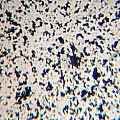
Microphotograph
image © Volker Emrath
Further Reading
References
(1) Helwig, K. Iron Oxide Pigments, in Artists’ Pigments, Berrie, B.H., Ed., National Gallery of Art Washington, 2007, pp 38 – 109.
(2) Cornell, R. M., & Schwertmann, U. The Iron Oxides: Structure, Properties, Reactions, Occurrences and Uses. Wiley 2006.
(3) Earth pigments tour website. Contains a colour map of many earth pigments.
(4) Hradila, David; Grygara, Tomáš; Hradilová, Janka; Bezdička, Petr. Clay and iron oxide pigments in the history of painting. Applied Clay Science 22, 2003, p. 230.
(5) Oliveira, Luiz F.C. de, Howell G. M. Edwards, Ray L. Frost, J. Theo Kloprogge, and Paul S. Middleton. “Caput Mortuum: Spectroscopic and Structural Studies of an Ancient Pigment.” The Analyst 127, no. 4 (2002): 536–41. doi:10.1039/B111473P.
S. Muntwyler, J. Lipscher, HP. Schneider, Das Farbenbuch, 2nd. Ed., 2023, alataverlag Elsau, pp. 114-117.

